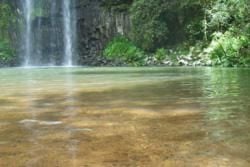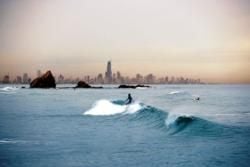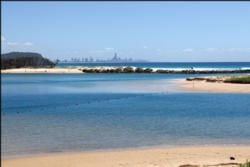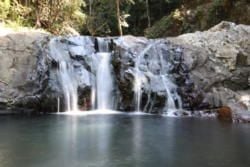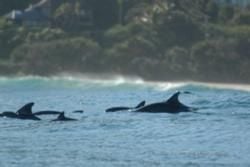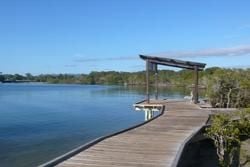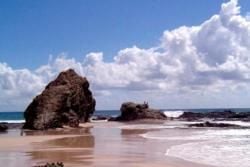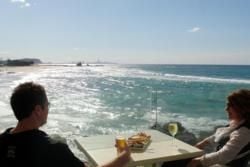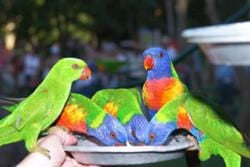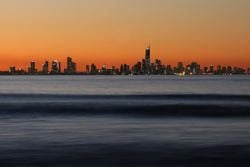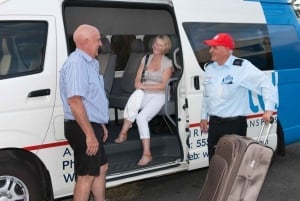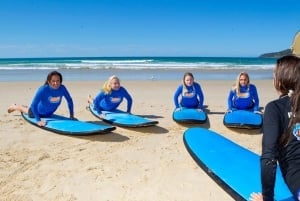Southern Gold Coast
Spectacular hidden gem of Australia.
The Southern Gold Coast area has remained relatively hidden but delights with some of the Gold Coast’s best kept secrets. The area is a refreshing contrast and a world away from the glitz and glamour areas of the Gold Coast. Here a laid back lifestyle is the order of the day and the more tranquil environment has attracted Australian families for many years and now its allure attracts an increasing number of international visitors.
The Southern Gold Coast area stretches from Tallebudgera Creek (just south of Burleigh Heads) to the state border with New South Wales at Coolangatta / Tweed. It is one of the most vibrant yet still unspoiled destinations on the Gold Coast. The beaches of the Southern Gold Coast are amongst the best on the Coast and offer the perfect place to enjoy the views of Surfers Paradise and the high rise buildings of the t in the distance. It is a great location to watch the lights of Surfers Paradise as the sun sets slowly over the mountains of the hinterland.
This is an area rich in natural treasures with rainforests, abundant bird life, quiet tranquil waterways, cycling tracks, bush walks, surf schools, some of the Gold Coast's prettiest picnic spots and white sandy beaches to walk, swim and explore. Additionally some of the Gold Coast’s best-located beachfront restaurants, bars, and accommodation can be found on the Southern Gold Coast.
At the north end of this area is Tallebudgera (meaning "good fish"), where you can enjoy a beachside barbecue or marvel at the colourful fish as you snorkel the mouth of Tallebudgera Creek. There is also an ocean way trail through the sand dunes which is a great place for rollerblading. You will also find an 18 hole golf course and avid anglers will find plenty of fish off the beach and along the creeks. Tallebudgera Estuary is a great spot for water-based activities, so be sure to pack your gear for swimming, fishing, boating, water-skiing, windsurfing and canoeing.
Adjoining Tallebudgera, is the beautiful southern beachside suburb of Palm Beach which remains less developed than some of its neighbours. Here lies a beautiful stretch of sand stretching for kilometres between the mouths of Tallebudgera Creek and Currumbin Creek. Palm Beach is wide, sandy, and gloriously beautiful. This makes the beach very popular and the surf here is excellent. It is a nice spot for a picnic and is great for families. The southern end is a great place to take in views of the famous Currumbin Rock to the south and the Gold Coast skyline to the north. If the surf beach is not for you then you can swim in the sandy shored lagoon at the southern end that is often frequented by dolphins early in the morning. A short stroll from the lagoon is an eco-boardwalk through the mangroves taking in views of Currumbin Creek.
Currumbin sits at the very heart of the Southern Gold Coast area and prides itself on its commitment to conservation. Here is an inspiring beachside community culture that respectfully shares its environment with nature. There are large tracts of natural bushland with abundant native flora and fauna, as well as a pristine beach and foreshore. The meandering Currumbin Creek and estuary, with its well-preserved wetlands, and spacious grassy parklands combines to make Currumbin a laid back beachside living and holidaying destination well worth consideration.
Currumbin offers three choices for a day at the beach - Currumbin Lake and Creek, Currumbin ‘Alley’ and Currumbin Beach. Currumbin Lake and Creek are popular with swimmers, kayakers, canoeists, paddle boarders, and for fishing. It is also a popular walking spot. The lake is tidal and feeds out to the ocean and Currumbin Alley. Currumbin Alley is renowned for its point breaks and is frequented by long boarders, paddle boarders and learners. The waves are easily accessed from the beach, with only a short paddle to reach the wave breaks.
Currumbin Beach is clean, generally uncrowded, patrolled and is an ideal spot for families and sunbathers. The surf is generally gentle for swimming so it is popular with beginners and the rock pools at either end will amuse the kids for hours. The beach is bordered by the striking rock formations of Currumbin Rock at the northern end and Elephant Rock at the southern end next to the Currumbin Surf Club.
The local Wildlife Sanctuary is a world leader in eco-tourism. It was established almost 60 years ago by visionary conservationist, Alex Griffiths, who gifted the Sanctuary to the people of Queensland in 1976. Today, the Sanctuary is home to more than 1,400 native wildlife animals and birds, all on display amongst the Sanctuary’s natural bushland and rainforest setting.
Currumbin Beach is also home to the Swell Sculpture Festival , a free annual outdoor event that creates a visual splendour of arts and sculpture, set amongst the spectacular backdrop of the Currumbin beachfront. The largest touring short film festival of its kind in Australia, "In the Bin", is also held each year in conjunction with Swell.
Further south you will find the sleepy beachside suburb of Tugun ("breaking waves"). This surf beach is patrolled and a leisurely stroll north along Tugun beach will take you to Flat Rock, where there’s a park right beside the ocean. Other famous beaches in the area include Kirra which is known as ‘Surf Central’. Kirra Beach is considered to be the spiritual home of Gold Coast surfing. In the summer of 1962 a handful of locals, who at the time surfed using planks about 9 foot in length, held a meeting and formed Queensland’s first ever surfboard riders club. Snapper Rocks is another famous beach known for surfing and these two beaches (Kirra and Snapper Rocks) are covered further in the Regional info page for Coolangatta / Tweed.
Inland from the coast lies a green heart of the Gold Coast, Currumbin Valley, and here you can discover the pure serenity of nature. This ancient and timeless land was home to the Kombumerri tribe of Aborigines, who roamed it, and lived from its splendour for over 30,000 years. The slopes of this valley rise up to form the southern Hinterland region.


